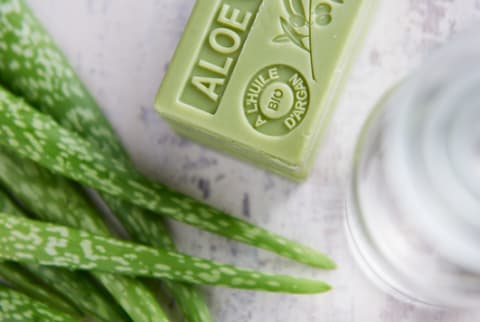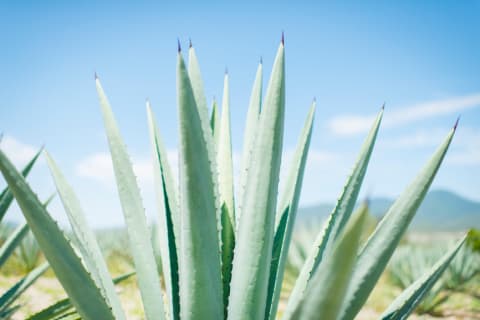Advertisement
The Hidden Health Benefits Of The Plants In Your Home



There's no denying that succulents look fabulous on display in our kitchens and living rooms. They are awesome plants: colorful, diverse, and famously easy to keep alive (just in case you forget to water them for a month). Plus, it's fun to think that we get to bring some of the desert's vast, wild, and free-spirited vibes into our homes.
But succulents like agave and aloe can do way more than just sit there and look great. In fact, they are a pretty powerful and versatile group of plants. For starters, succulents have special water-storing tissues that allow them to stay alive for long periods of time without water and survive weirdly diverse—anywhere from desert to alpine—habitats. Throughout history succulents have been used to make anything from soap to paper and they are absolutely packed with healing properties.
Here's how to use succulents for WAY more than just décor:
We are all about appreciating nature and allowing our plants to fulfill their full potential. And so—although there are thousands of species of succulents—here are four that you can incorporate into your life in more ways than one:
1. Agave
You've likely heard of agave (named after the Greek word for proud) because it's used to make agave nectar and tequila. But what you may not know is that agave also has antiseptic and anti-inflammatory properties1. Agave was traditionally used to treat cuts and burns and speed up wound healing, and in Central America people use this special plant for anything from stomach ulcers and jaundice to toothaches and menstrual problems. The leaves of the agave plant are even woven to make mats and paper.
Agave juice is rich in isoflavonoids, alkaloids, and vitamins B, C, D, and K. But before you go adding it to every recipe, you should know that too much agave can cause digestive upset, and pregnant women should avoid it.

2. Yucca
Historically, yucca was used to soothe scratches and cuts and even as a treatment for dry cuticles. The yucca plant contains saponins, which are chemical compounds that have exhibited2 anti-inflammatory properties. Many herbalists and healers recommend boiling the roots for about half an hour and drinking it as a tea to relieve pain from inflammatory conditions like arthritis. And although the research in humans isn't conclusive, some laboratory studies have suggested that its compounds display properties similar to drugs commonly used to treat joint pain.
Yucca is also rich in vitamins A, B, and C and is a good source of copper, calcium, manganese, potassium, and fiber—making it a potent health food and another succulent that seems to do it all.

3. Prickly pear
When talking about succulents it's hard to forget the cactus. Famous for their spines, cactus may not seem like the most nurturing plants in the world—but they have a ton of health benefits. Dr. Tieraona Low Dog, a medical doctor and expert in integrative medicine, recommends prickly pear to her patients as a food (grilled or boiled and eaten whole), as a supplement, or to drink as juice. It contains high levels of fiber, vitamin C, carotenoids, and betalains (which are a rare type of antioxidant).
Apparently, prickly pear is a popular hangover treatment in Mexico, and this specific use has actually been supported by research published in the Journal of the American Medical Association. The study found that participants who drank prickly pear before consuming alcoholic beverages had significantly less nausea, dry mouth, and loss of appetite the following day—probably due to its anti-inflammatory properties. Other traditions use it as a treatment for diarrhea, asthma, high blood pressure, and gastric acidity, but they have not been supported by research.

4. Aloe
The famous species Aloe vera has been popular for ages and is even depicted in ancient Egyptian drawings that are over 6,000 years old. There are hundreds of species of aloe, most of them have been used traditionally for their healing properties, and today it is one of the most widely used plants in the world. You see aloe everywhere, especially in juices, lotions, and creams. The clear gel from the aloe plant is often taken internally to treat osteoarthritis, bowel diseases, and fever, and the sap is popularly used as a (very effective) laxative. Aloe can be applied topically to treat burns, cuts, and bruises and there is some evidence that it's beneficial for inflammatory skin conditions and even dandruff.
There's no doubt about it: Succulents are special. People have known it for thousands of years, and you can tell just by looking at them. A symbol of resilience, adaptation, and protection, they bring a powerful energy into your home and some healing to your life.